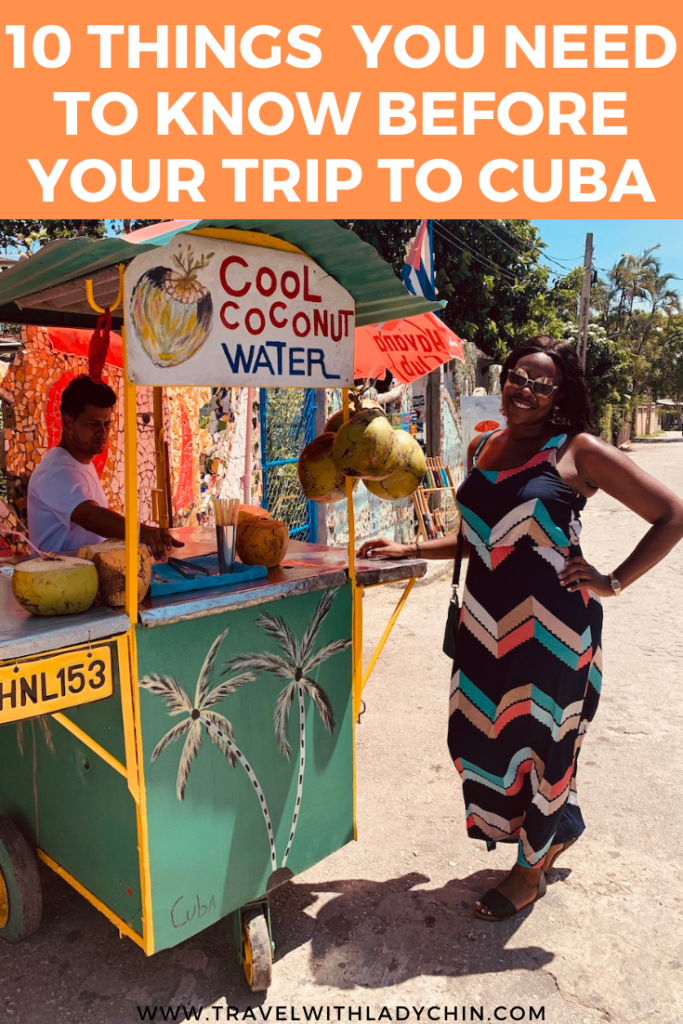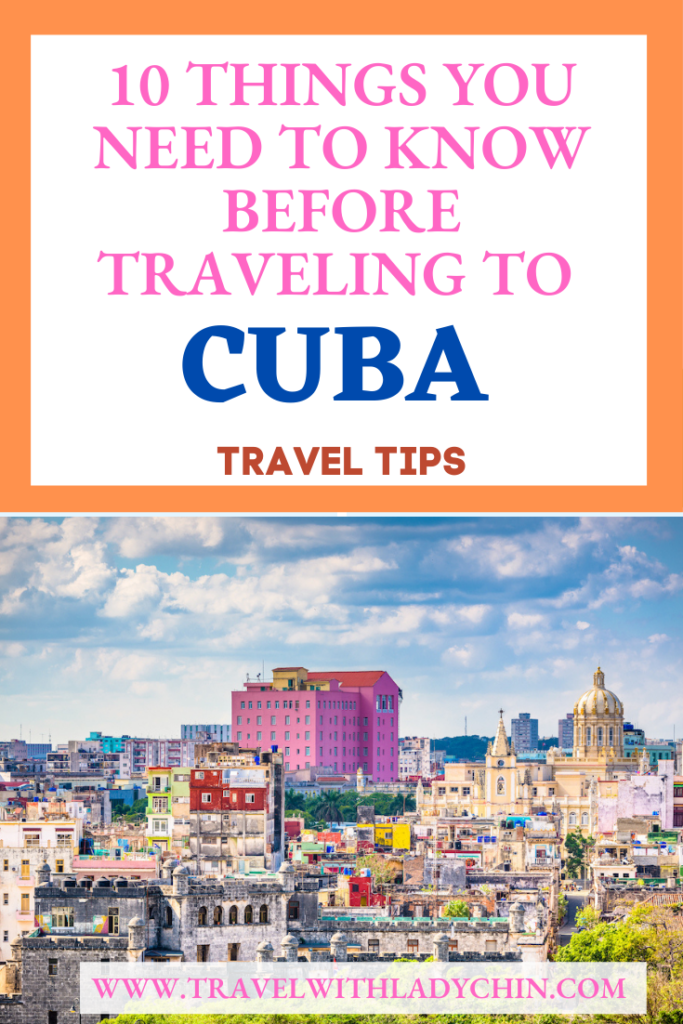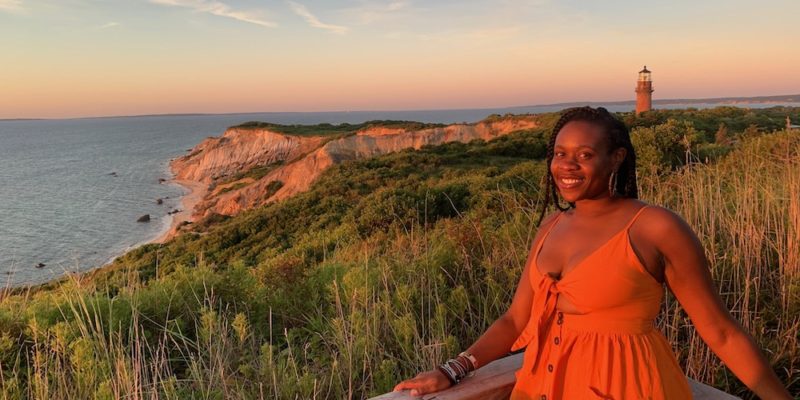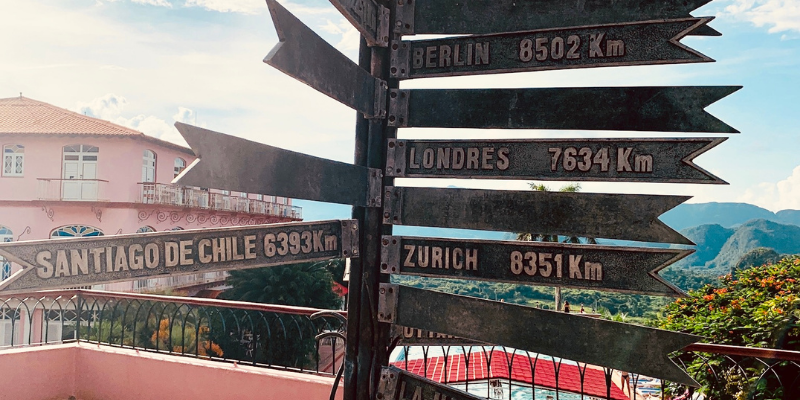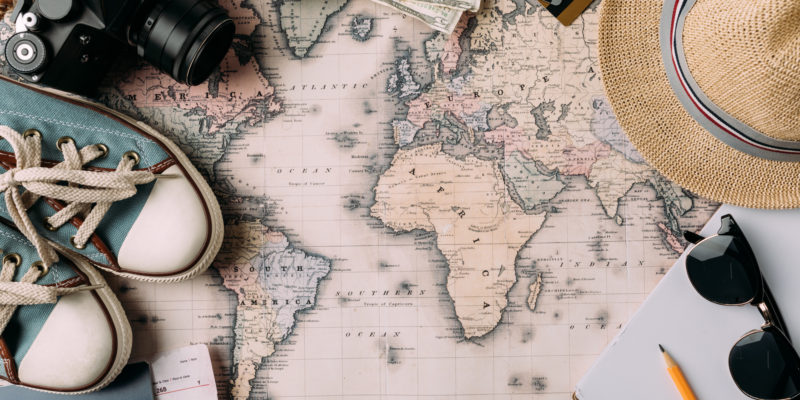Last Updated on September 20, 2023 by Lady Chin
Cuba is a destination that’s on many travelers’ bucket lists. Visiting this unique and special island was a dream of mine. After four visits, I’ve gotten more thoughtful about how to prepare for my trips. Cuba is a place where going with the flow will make for a more enjoyable trip but also, doing your research ahead of time will save you from frustration and avoidable mistakes. In this post, I will break down 10 important travel tips you need to know before visiting Cuba.
THIS POST CONTAINS AFFILIATE LINKS, AS EXPLAINED IN MY DISCLOSURE POLICY.
Pin Me for Later!
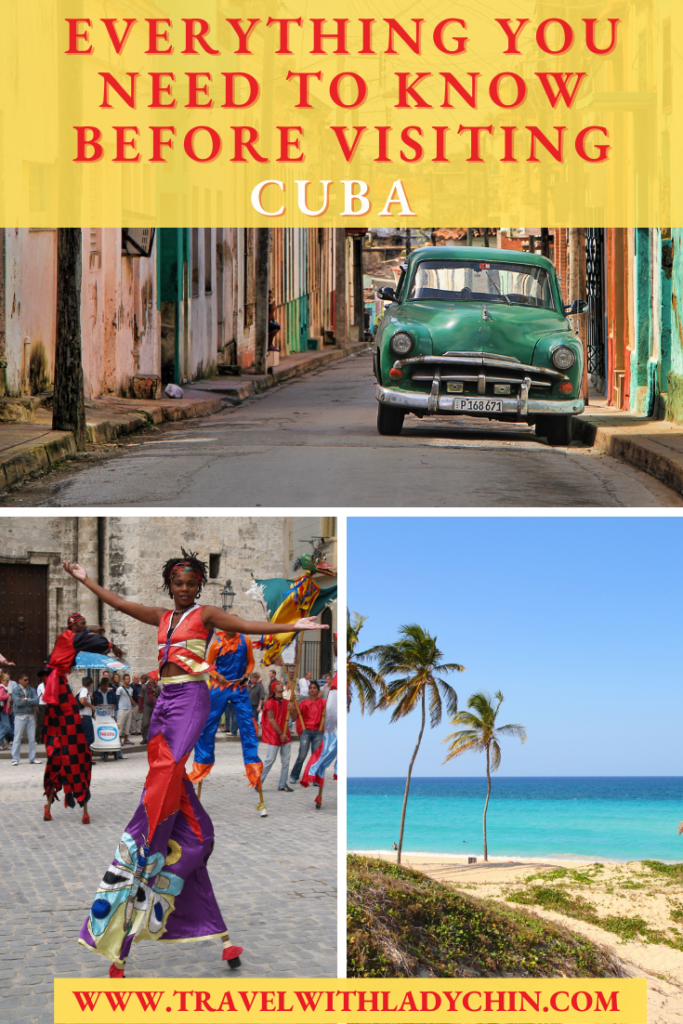
This is the eighth post in the Cuba series. Here’s the complete 10-part series:
Cuba Travel Series
Travel Guide: The Complete Travel Guide For First Time Visitors
Money Honey: Cuban Currency Guide: Everything You Need To Know
For The Culture: 36 Ways To Immerse Yourself in Afro-Cuban Culture
The Ultimate Cuba Bucket List: 101 Fun Things to Do in Cuba
Cuba Bucket List: Top 10 Epic Things To Do in Cuba
Packing Tips: The Complete Guide To Packing For Your Trip To Cuba
Inspiration: 30 Photos That Will Inspire You To Visit Cuba
Travel Tips: 10 Things You Should Know Before Visiting Cuba
Trinidad: How To Explore Trinidad in 3 Days
Viñales: How To Take the Perfect Day Trip From Havana To Viñales
10 Essential Things You Should Know Before Visiting Cuba
1. Internet Is Limited
Ok, let’s get into it. Don’t expect the internet to be readily available at your casa or hotel. Before traveling to Cuba, make sure to do your research, so you have an idea about the activities, tours, day trips, etc., you want to do. Wifi hotspots are available in Havana at most parks and hotels and in front of the ETECSA building in other cities.
To access the internet, you must buy a wifi card called Nauta. You can purchase wifi cards from street vendors and hotels at Plaza del Cristo, in front of La Floridita and José Martí international airport. I found the wifi cards cheaper at the airport, so I recommend buying them before you head into Havana or any other part of the island.
Internet cards are available for 30 minutes for $1 or 1 hour for $2. Due to high demand, wifi cards tend to sell quickly, so buy a few.
My Airbnb had internet access during my last visit, but I still had to use my wifi card. Also, the internet wasn’t fast or reliable, so be prepared that the internet may not work when needed.
Tip: Bring printouts of your documents, such as hotel and tour reservations, or take screenshots, so you have them.
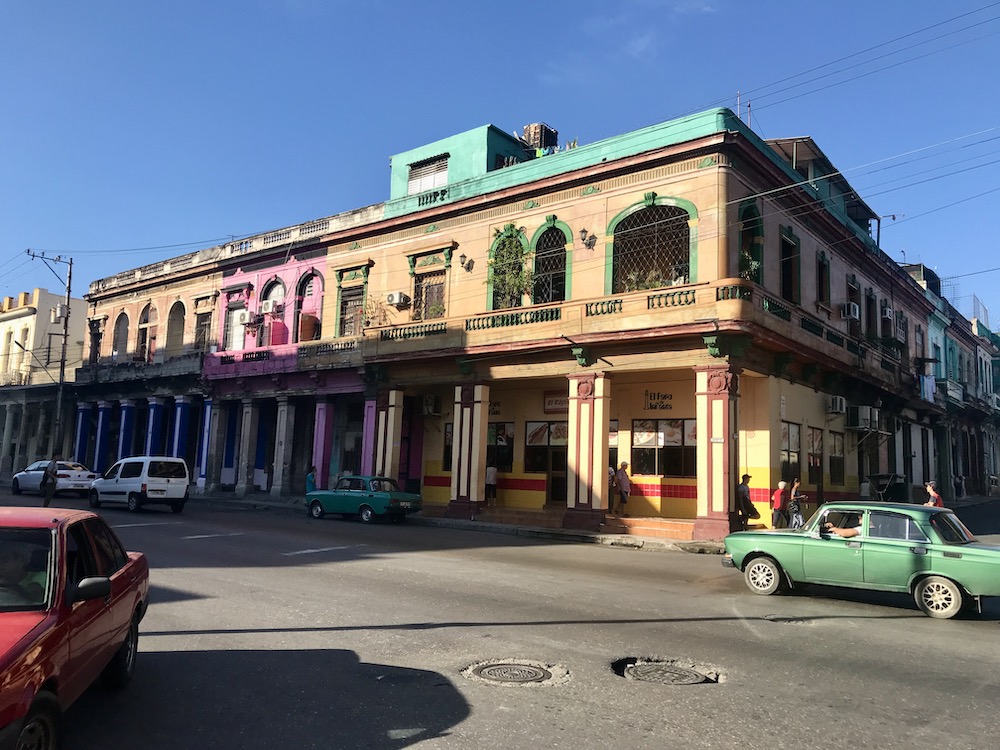
2. Don’t drink the water!
Poor sanitation, old pipes, pollution, and even human waste are contributing factors that impact water quality. I recommend sticking to bottled water or LifeStraw, a built-in purifier or Nomader, and a collapsible water bottle.
Avoid ordering mixed drinks containing ice made from tap water. I wasn’t trying to get sick during my stay, and I hope you don’t either! I even brushed my teeth with bottled water the entire time.
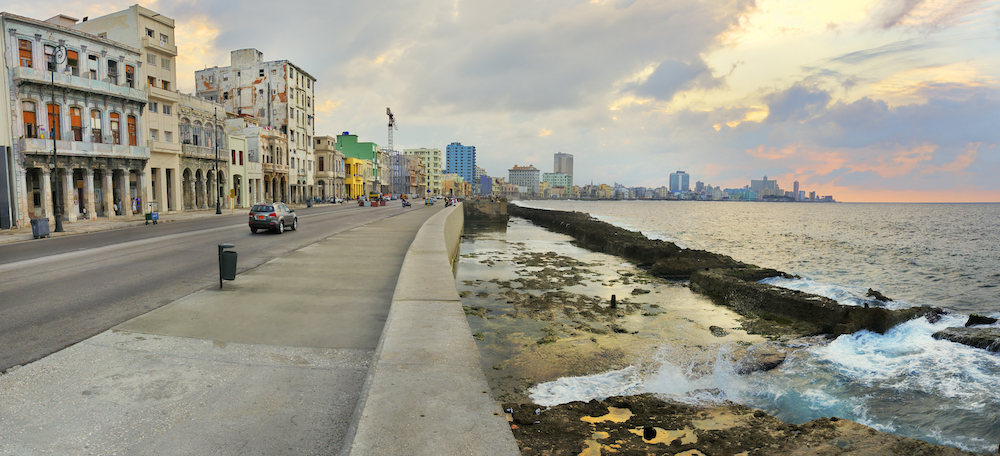
3. Eat at Paladares
I learned that most restaurants in Old Havana are state-run and don’t care much about the food quality. Whereas paladares, family-owned restaurants, actually care about the quality of the food and are affordable. El Cimarrón located in Vedado is my favorite paladar. The food was simply delicious, and we went back almost every day for at least one meal!
As a foodie, I was looking forward to all the yummy Cuban cuisine and found the food wasn’t much to write home about. In my opinion, I found the food, especially in Old Havana, to be overpriced and bland.
Our tastiest meals were in Vinales, Baracoa right outside Havana, and Trinidad.
Tip: You know you found a good paladar by the long line of locals and tourists waiting for a table.

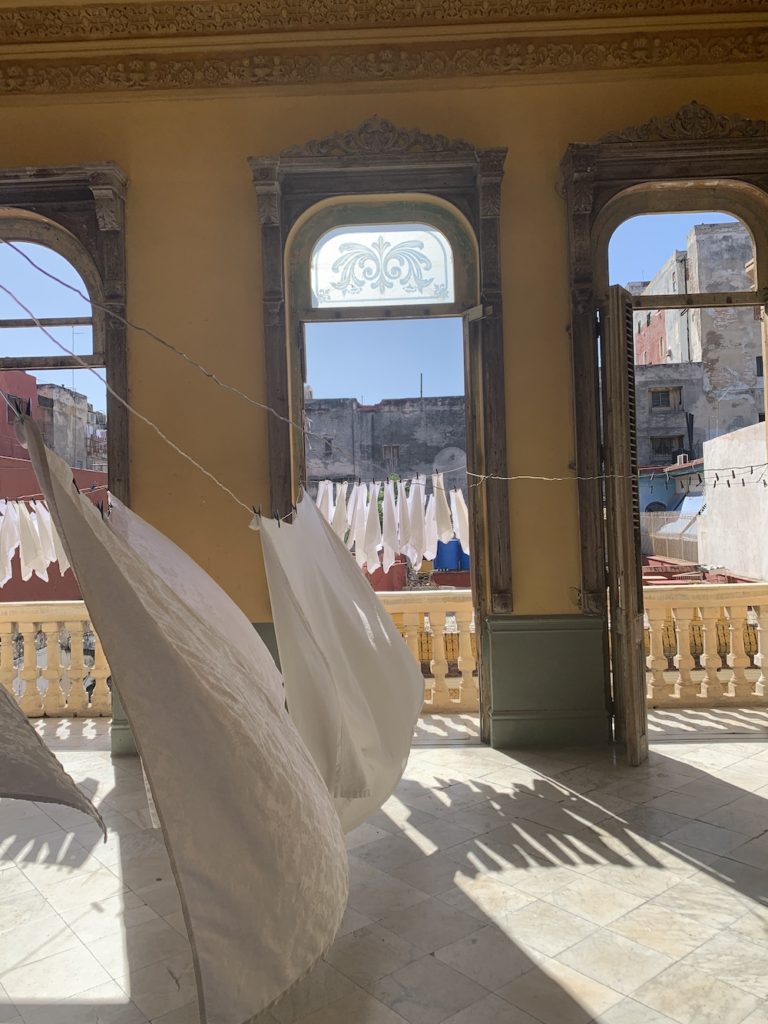
4. Is Cuba Safe?
Overall, Cuba is safe as punishment for crimes can be severe. Not to mention, citizens are not allowed to own guns, and violent outbreaks aren’t the norm. Petty theft happens, and beware of anyone trying to befriend you so quickly. You might be walking into a scam and not realize it until it’s too late.
I’ve felt safer traveling around Cuba, even solo, than I do living in the United States. While Cubans are generally friendly, practicing common sense is still important. Remain alert of your belongings and surroundings as if you would in your home country.
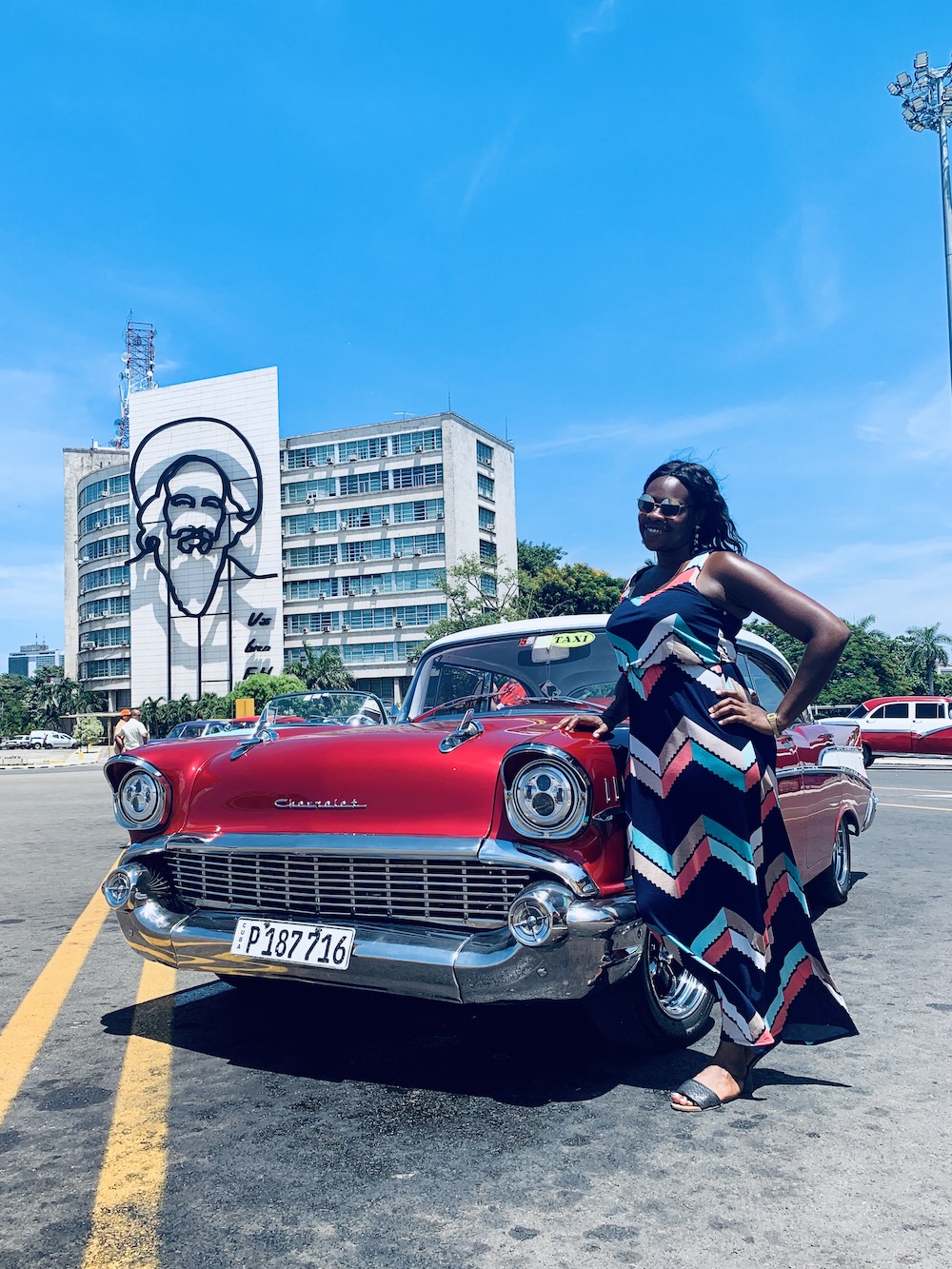
5. Bring Plenty of Cash
You want to make sure to bring enough cash to last the entirety of your trip. I budgeted $50-80 daily, and my trips usually last up to nine days.
The best currency to bring for American travelers is Euros and British Pounds because you get the best exchange rate. During my first visit, I brought Mexican pesos, and my friend brought Euros.
We exchanged the same amount of money, the Euros exchange rate was stronger, and her money went further. Since then, I have only brought Euros with me to Cuba.
Government currency exchange houses, CADECA, are the most reliable and safest ways to change money. You can find CADECA offices in the airport, hotels, resorts, and shopping centers.
Americans can’t use a credit, or debit card or withdraw money from an ATM due to the Cuban sanctions imposed by the U.S. To check the latest news about the sanctions, click on this page.
Note: Cuban currency is not traded internationally and can not be bought ahead of time outside the country.
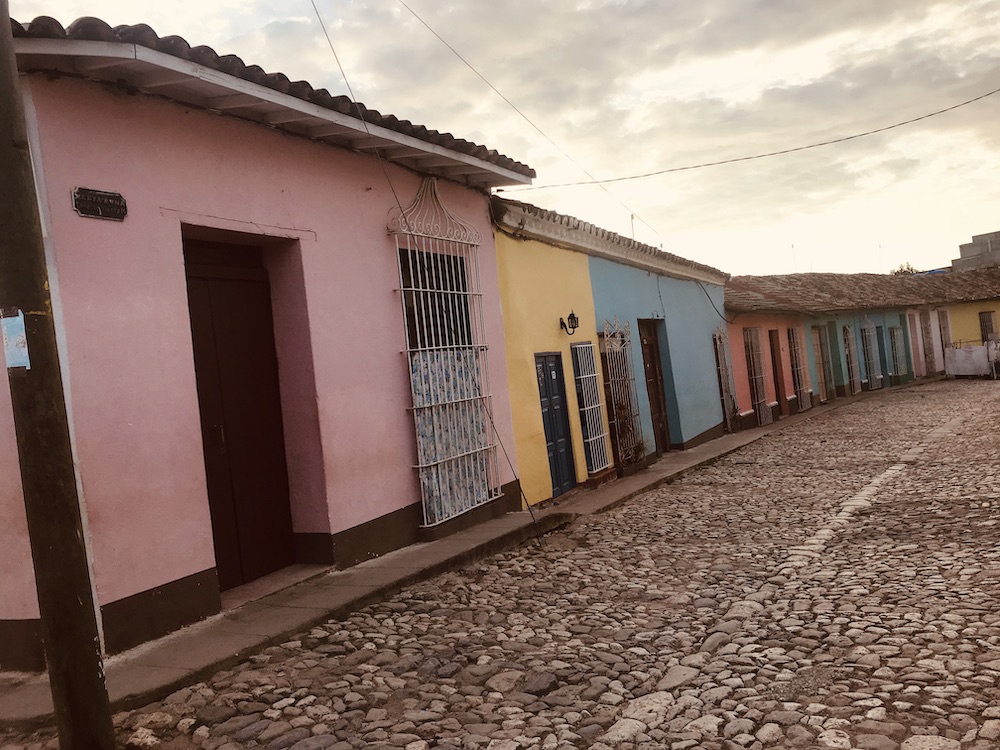
6. Download Offline Maps
Do yourself a favor and make sure to download an offline map. Maps.me or Galileo Offline Maps App are both great options. Maps.me is free whereas you have to pay for the Galileo app. I suggest downloading your maps ahead of time. The GPS on your phone will show your location and pre-uploaded maps.
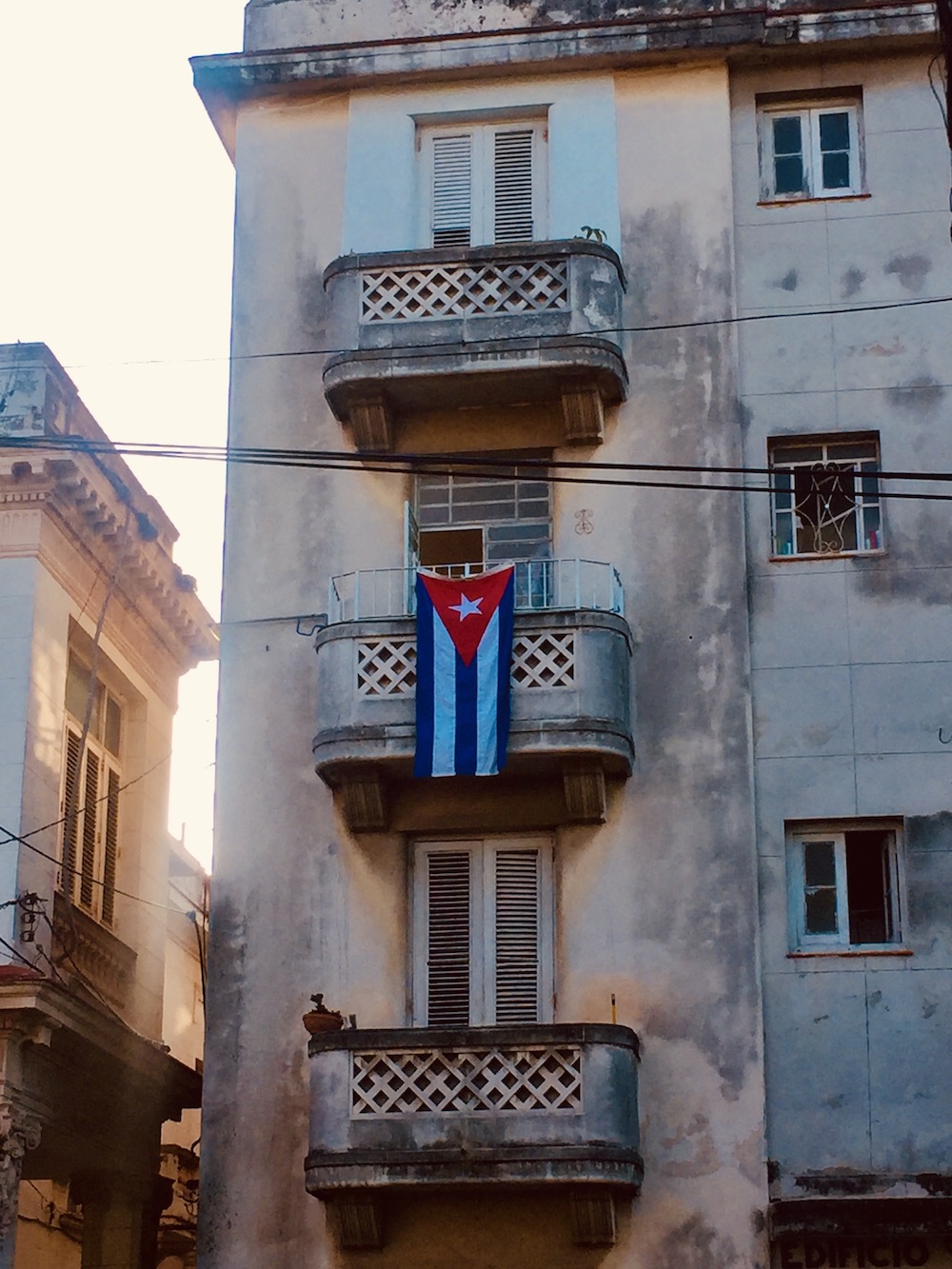
7. Pack Your Own Snacks
Finding stores with general supplies, snacks, and water was challenging. We lucked out during our first trip and found a gas station near our Airbnb with snacks and plenty of Havana Club, but outside of that, we didn’t have much luck finding anything else.
Also, everything closes by 9:00 pm at the latest. I always like to pack my favorite snacks if I get a craving or need a little something to hold me over until the morning.
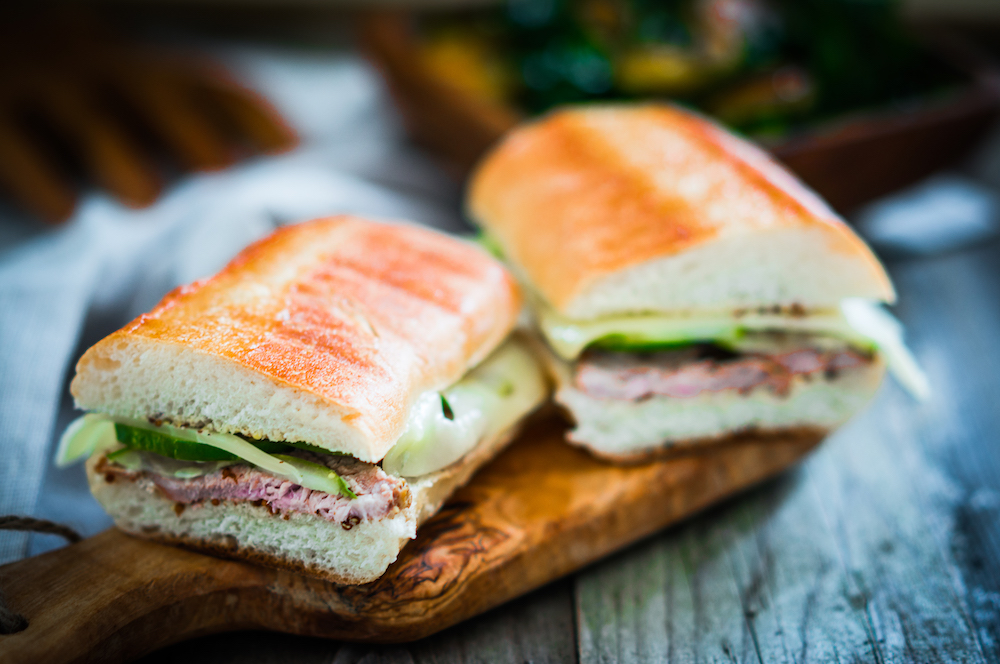
8. Learn Basic Spanish
Understanding basic Spanish phrases or traveling with a translator will save you from a lot of miscommunication. While you can get away with speaking English in Havana and other big cities, knowing how to say a few words or even speak in Spanglish will get you a lot further and makes your experience even better!
Even though I am always the translator, I encourage my friends to learn basic phrases so they can communicate to the best of their abilities.
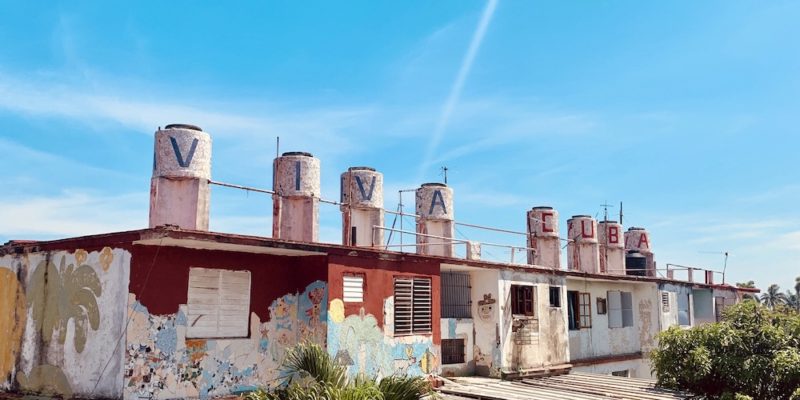
9. Best Time to Visit
Cuba has year-round tropical weather, and there isn’t a wrong time to visit. However, it is important to note that the high season (December to April) attracts many visitors. If you’re planning on going around this time, be sure to book your accommodations and activities in advance.
The low season (July to November) is hurricane season so expect spells of rain, especially towards late August to early October. I’ve visited Cuba during the high and low seasons and prefer being there during the low season with fewer crowds.
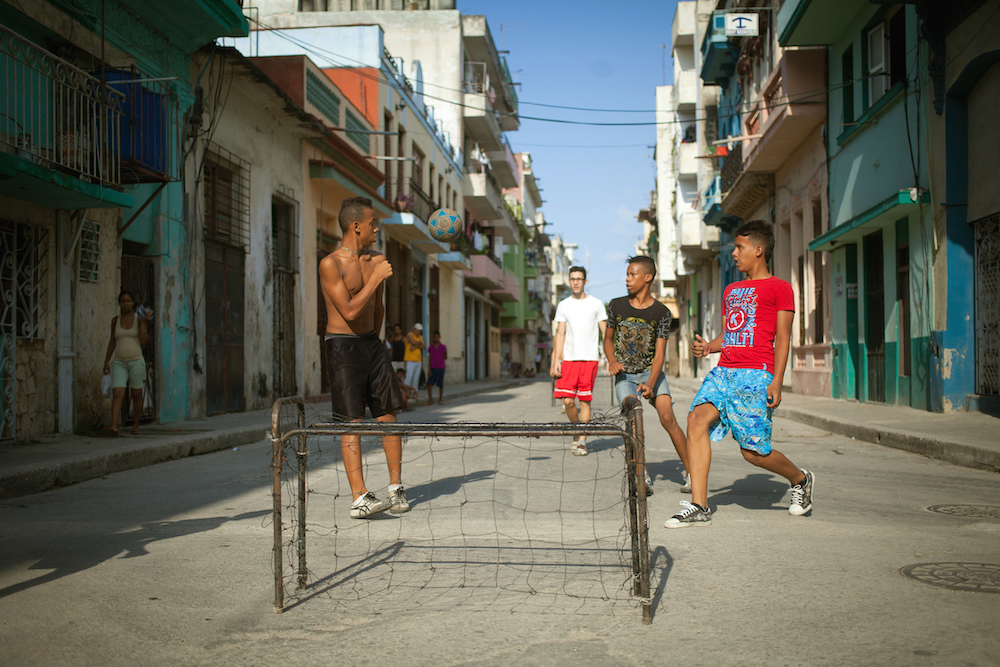
10. Arrange an Airport Transfer
U.S airlines are only allowed to land at José Martí international airport in Havana. The best way to get into downtown Havana is by taxi. If you’ve already booked your stay in Havana, you can contact your host or hotel ahead of time to arrange an airport pick-up.
I booked my apartment with Airbnb and arranged a pick-up with my host. A few times, my host didn’t have access to a car and sent a friend to find me. Your driver will have a sign with your name waiting for you outside the international terminal.
However, if you haven’t booked your accommodations in advance, not worry; taxis are waiting outside the terminals.
Before agreeing to the taxi ride, make sure to negotiate the price. The ride is about 25 minutes and costs about $20-25 one-way. If you pay more than $30, know you are being scammed.
Alternatively, you can take a free shuttle to Terminal 1 (domestic terminal) and catch the local bus into Vedado, a neighborhood in Havana.
While I haven’t tried taking the bus from the international airport into Havana, it’s an option if you’re looking to save a few dollars. I will be honest, taking the bus from the airport into Havana wouldn’t be my first choice but more power to you if you decide this is the best option.
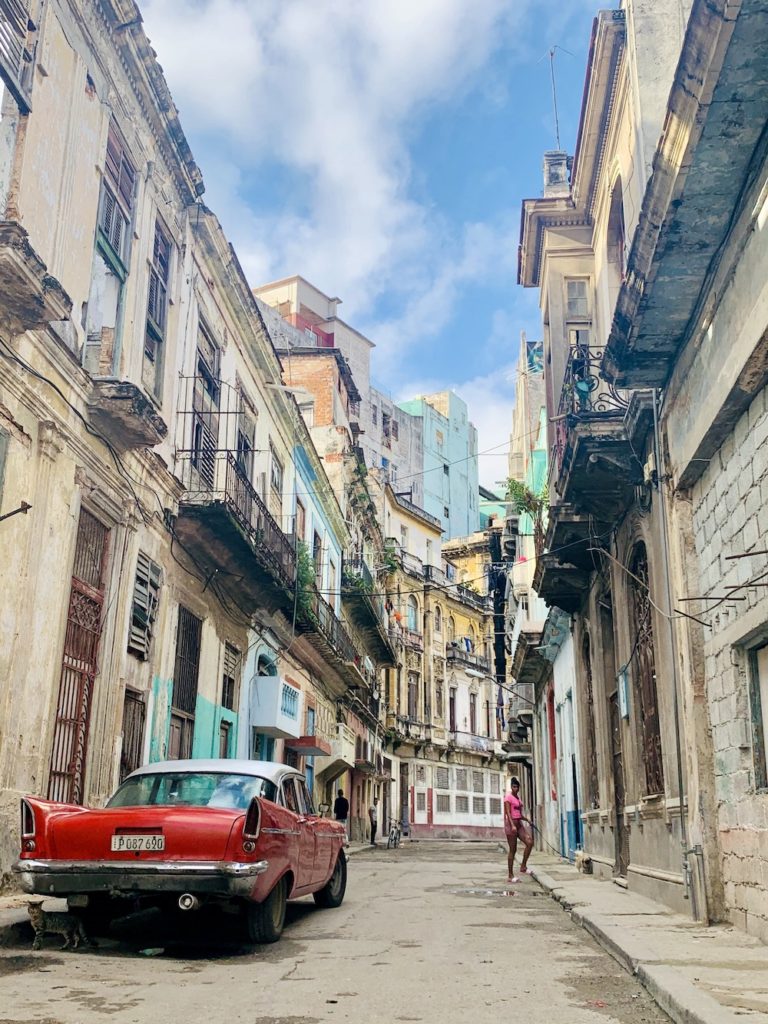
Conclusion – Lady Chin’s Two Cents
Cuba is a place where research and planning ahead will get you far. Looking back, I realized I made a handful of preventable mistakes but chucked those up to being an overzealous rookie. Let’s just say I’m a lot wiser now.
What did I miss? What do you wish you knew before you visited Cuba?
Did you like this post? If so, please share!
